In this case study we’ll be sharing exactly how we increased North Spore’s organic search traffic by 192% in 16 months.
We’ve used these same techniques on 100’s of other eCommerce stores to achieve very similar results. And by the end of this case study, you’ll be well equipped to implement the same SEO techniques on your eCommerce store.

But first, who’s North Spore?
The Client: North Spore
North Spore is an eCommerce business based in Westbrook, Maine that sells mushroom growing kits and supplies. They reached out to us to use because their website was hammered by Google’s Core Algorithm Update on May 5, 2020.
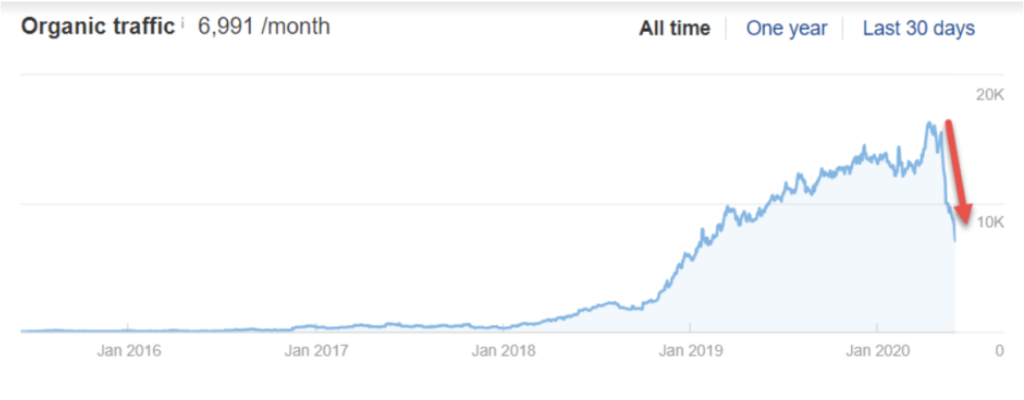
- Website: northspore.com
- Products: Mushroom growing kits and supplies
- Platform: Shopify
- Location: Westbrook, Maine
- Revenue: $1 mil – $10 mil
And as a direct results of all the steps outline below, organic search traffic skyrocketed to new levels.
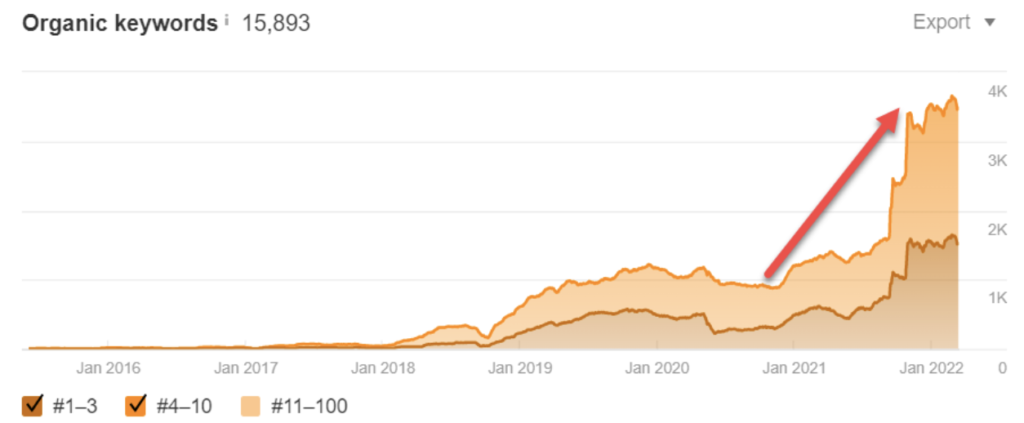
180 Marketing Playbook
We start every SEO campaign the same way by implementing The Playbook. The 180 Marketing Playbook is a proprietary system we’ve developed to get huge gains for eCommerce stores as quickly as possible.
Over the course of 10 years and 100’s of SEO campaigns, we’ve fine-tuned The Playbook to be a repeatable system with a very high success rate.
The first step of The Playbook was to identify the potential obstacles and opportunities during the initial Discovery meeting.

During the Discovery meeting our main goal was to uncover the following:
- How much search volume and SEO opportunity is there?
- How competitive is the market?
- Overall, is the project feasible?
Search Volume and SEO Opportunity
To our surprise, there were 1,000’s of people searching for mushroom growing kits every single month. There were definitely A LOT of search opportunities.
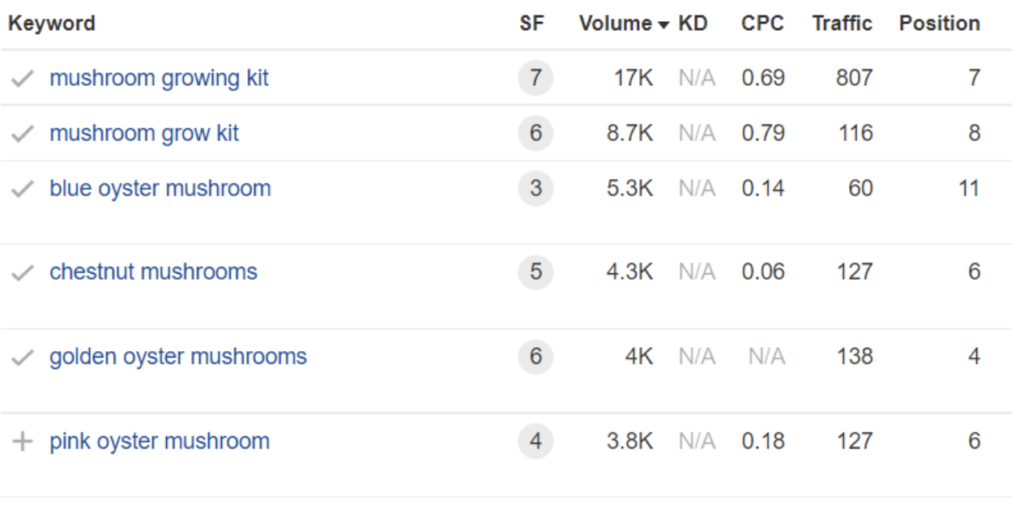
But what about competition?
SEO Competition
The next step was to check to see how difficult it would be to rank for their keywords.
We did this by reviewing the search engine results pages (SERPs) for their top keywords to see how their link metrics (Domain Rating and URL Ratings) stacked up to the competition.
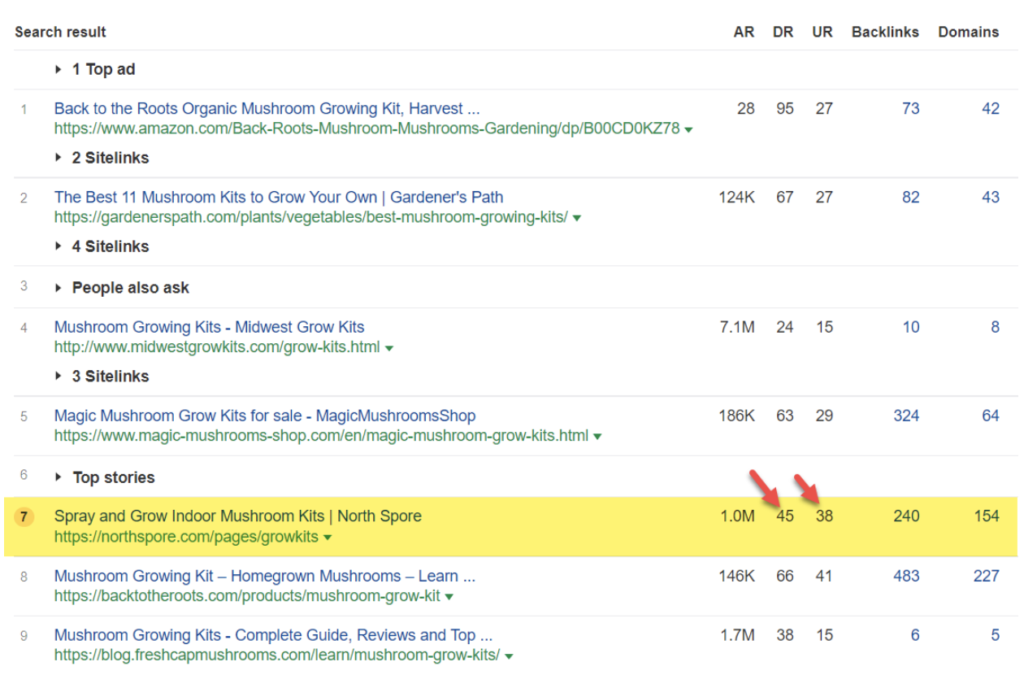
Their Domain Rating of 45 was a little bit below average. Most of the sites ranking on page 1 had a higher Domain Rating (usually in the 60’s), with Amazon being the clear winner with a DR of 95.
But…
Domain Rating is really just 25% of the story when it comes to keyword difficulty. A lower Domain Rating website can easily outrank a higher Domain rating website with enough backlinks pointed directly at the ranking page.
And this is where North Spore shined. Their main Mushroom Grow Kits category page (and other category pages) had more backlinks than pretty much everyone else on page 1.
So overall, their target keywords appeared to be moderately competitive but still obtainable.
Search Opportunity? High.
SEO competition? Moderate.
Is the project feasible? Yes.
Based on our initial analysis, we were confident we could take on the SEO project and deliver a positive ROI.
The next step was to start building out the SEO Strategy.
SEO Strategy
We spent about a week reviewing the website, keyword landscape, and competition to uncover the biggest SEO issues and opportunities. We found a few glaring issues that we knew would need to be addressed for a successful SEO campaign.
- Title tags lacking important keywords
- Meta descriptions not optimized and just pulling from the body content
- Content not optimized
- Poor internal linking
- Duplicate admin subdomain indexed
- Product pages not properly marked up with structured data
- Spammy backlinks
- Not enough backlinks to compete
We now had all the information we needed to build out an effective SEO plan.
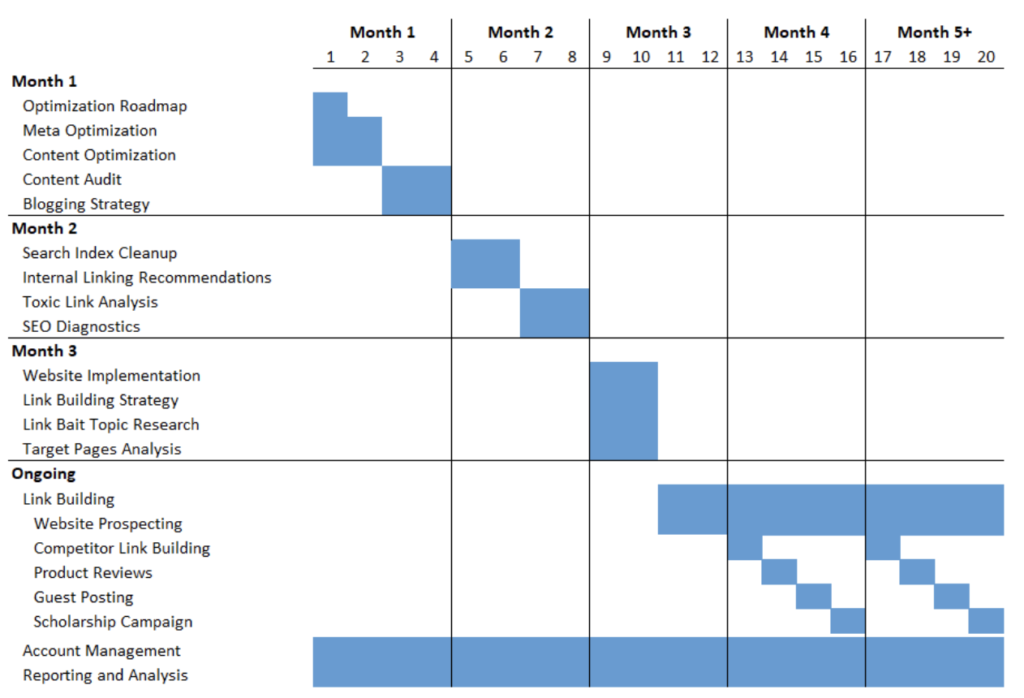
SEO Foundations
With the SEO Strategy complete, it was time to start with the SEO Foundations. These are the essential items and deliverables that ensure a strong SEO foundation for us to build upon.

And from our initial SEO audit, there were a total of 9 foundational SEO opportunities we wanted to address:
- Optimization Roadmap
- Meta Optimization
- Content Optimization
- Content Audit
- Blogging Strategy
- Search Index Cleanup
- Internal Linking Recommendations
- Toxic Link Analysis
- SEO Diagnostics
1. Optimization Roadmap
The first step of the SEO Foundations phase was to build out our Optimization Roadmap. This report uses our SEO Opportunity Score metric which is a weighted average between search volume and ranking position. It shows us exactly which pages on the website had the most traffic potential and should be prioritized first.
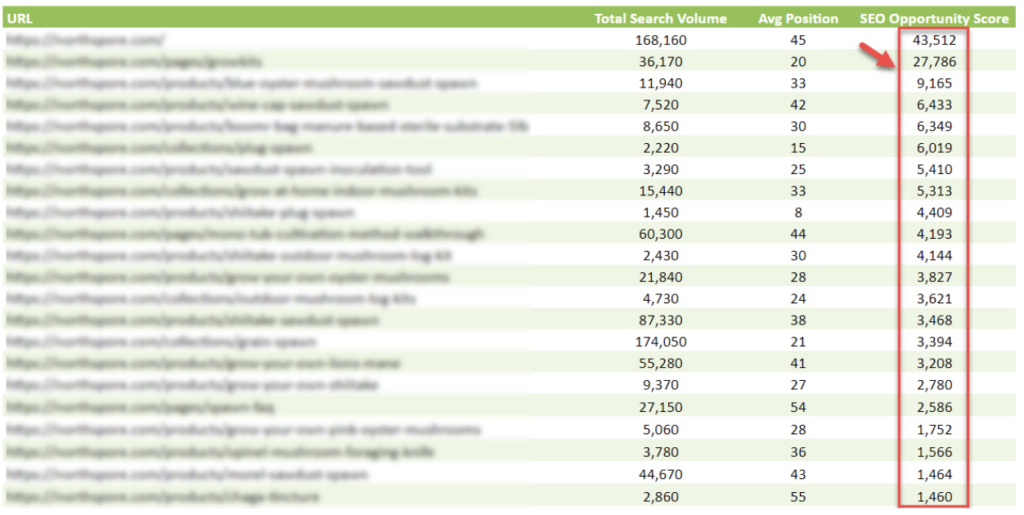
2. Meta Optimization
With a clear gameplan on which pages should be optimized first, we jumped right into Meta Optimization.
For each of these pages we identified the most important keyword(s) to rank for, and then optimized their title tags, meta descriptions, and header tags to make sure these keywords were included.
3. Content Optimization
The next step was to optimize the content for these pages using Surfer SEO. The content optimization process goes something like this:
We ran this analysis on all our high-opportunity pages and now had a list of actionable keywords that needed to be included in every piece of content.
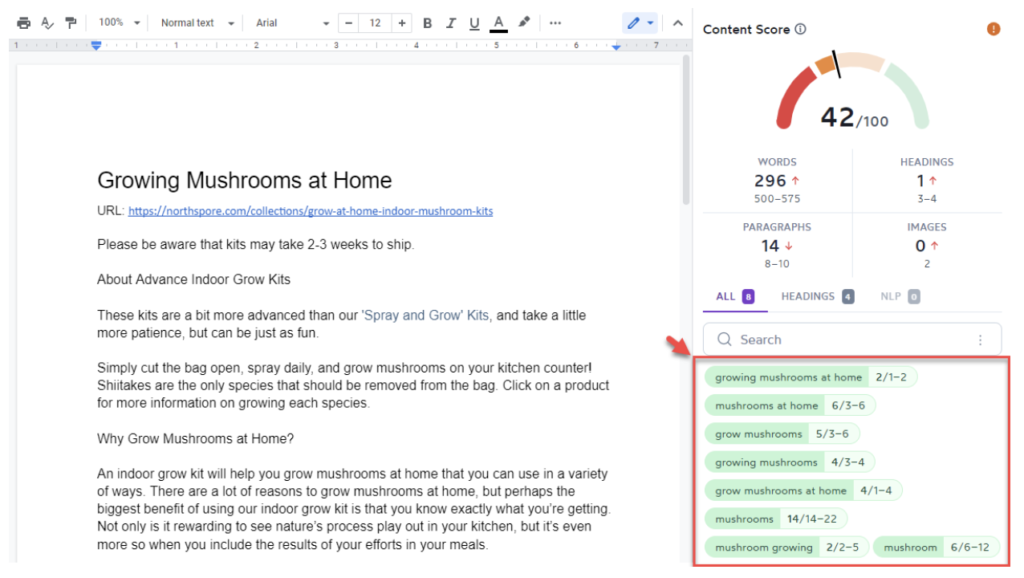
Our editorial team then optimized the content to include these target keywords.
4. Content Audit
We wanted to make sure the content on the blog was high-quality with strong engagement. Afterall, having a bunch of low quality articles could have a negative impact on SEO.
So we reviewed all the blog posts to identify which ones should be cut and which ones should be redirected.
Here’s an example of one of the old blog posts we found that had thin content, wasn’t driving any traffic, and didn’t provide much value to customers. The screenshot below shows the entire blog post, nothing was cut off.
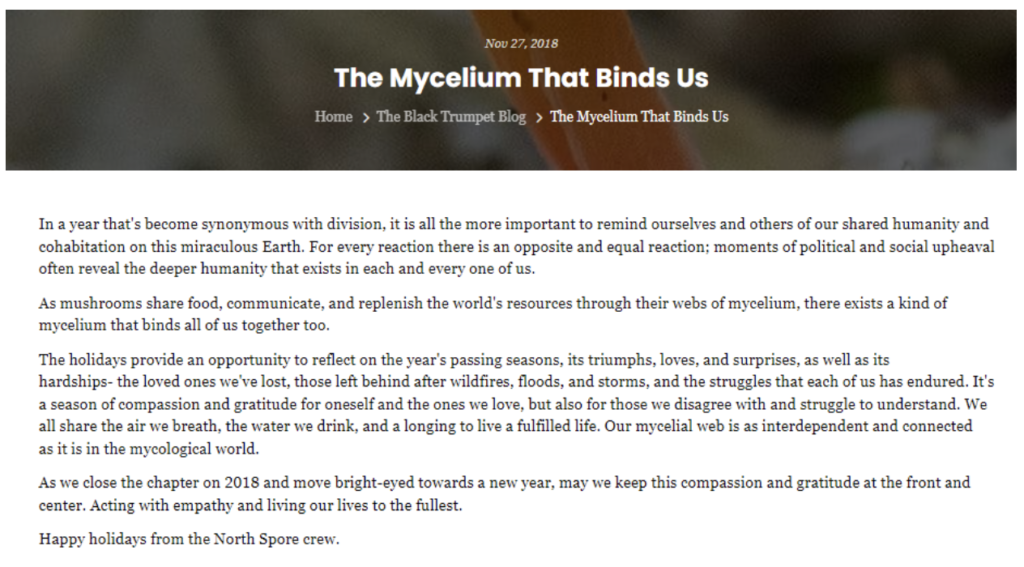
This was a short blog post wrapping up the 2018 year. It was very relevant at the time, but no longer provides any value to users or search engines.
So we made recommendations on which pages to keep and which pages should be trimmed.

As a result, the only blog posts that were left were those that actually provided significant value to users and should be indexed.
5. Blogging Strategy
The North Spore team are true subject matter experts when it comes to growing mushrooms. They already had a lot of excellent content about mushrooms. But we wanted to help infuse their content marketing efforts with search data to maximize their blogging efforts.
We did extensive research to find the perfect content topics that had the following characteristics:
- High search volume – The topic needed to have the ability to drive lots of search traffic.
- Low competition – We need to make sure we can actually rank for the target keyword.
- High conversion potential – We wanted keywords that could drive revenue, not just traffic.
And there were a few sources we leveraged to uncover the perfect content topics.
- Data mining variety of keyword research tools
- Analyzing rankings of competitors
- Reviewing high performing articles on industry blogs
After the research and analysis, we were able to build a list of 100 high opportunity blog topics.
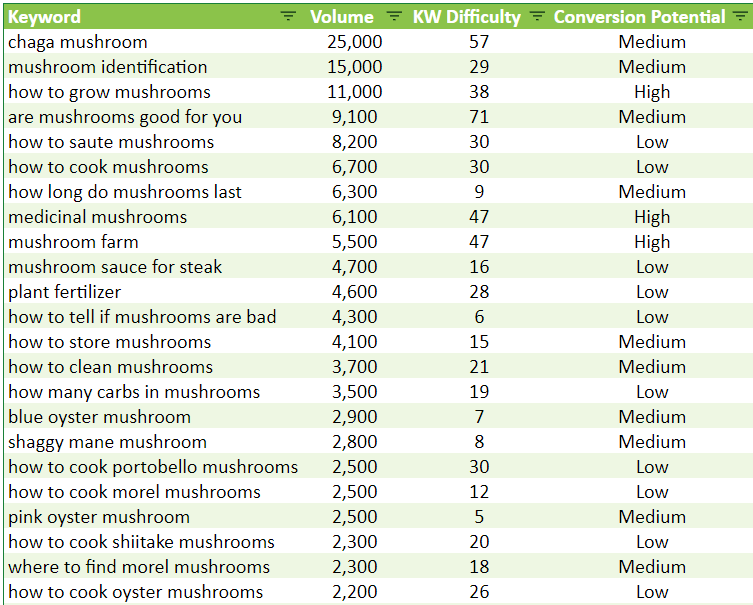
Some of the blog posts had lower conversion potential and were aimed at customers higher up in the sales funnel, while others had high conversion potential and were directed towards customers lower in the sales funnel.
6. Search Index Cleanup
We wanted to ensure that there weren’t any duplicate URLs or other “dead weight” pages getting indexed in Google. Similar to the Content Audit, having a bunch of low-value pages indexed can have a negative impact on rankings.
We reviewed all the URLs on the website and cross-referenced them with those indexed in Google. We were able to identify 82 duplicate URLs that were indexed and needed to be removed from Google index.
Here are a few examples of the types of URLs that needed to be deindexed.
- Blog Tag pages: https://northspore.com/blogs/the-black-trumpet/tagged/health-and-wellness
- Parameter pages: https://northspore.com/products/mushrooms-demystified-david-arora?_pos=1&_sid=ef1949d96&_ss=r
- Myshopify.com pages: https://north-spore.myshopify.com/collections/grain-spawn
For each of these URL types, we either implemented noindex tags, canonical tags, or redirects to ensure they wouldn’t get indexed in the future. We also manually removed these problematic URLs in Google Search Console using the URL Removal tool.
7. Internal Linking Recommendations
North Spore already had dozens of great blog posts on the website. But from our initial SEO audit, we noticed that there wasn’t as much internal linking from these blog posts to high-value category and product pages.
Let’s say we wanted to improve rankings for one of their target keywords “oyster mushroom spawn” (2,900 searches/month) which is currently ranking on the Blue Oyster Mushroom Sawdust Spawn product page.
We could look for mentions of “oyster mushroom spawn” on existing blog posts and hyperlink that text to the product page. Example:

And that’s exactly what we did.
We reviewed all the existing articles for internal linking opportunities to relevant category pages, product pages, and even other blog posts.
8. Toxic Link Analysis
We wanted to make sure the NorthSpore.com domain didn’t have any potentially harmful backlinks that could have a negative impact on rankings and traffic.
So we reviewed every single backlink and looked for anything that search engines might view as spammy. During our analysis we found dozens of low-quality, duplicate websites that were linking back to NorthSpore.com.
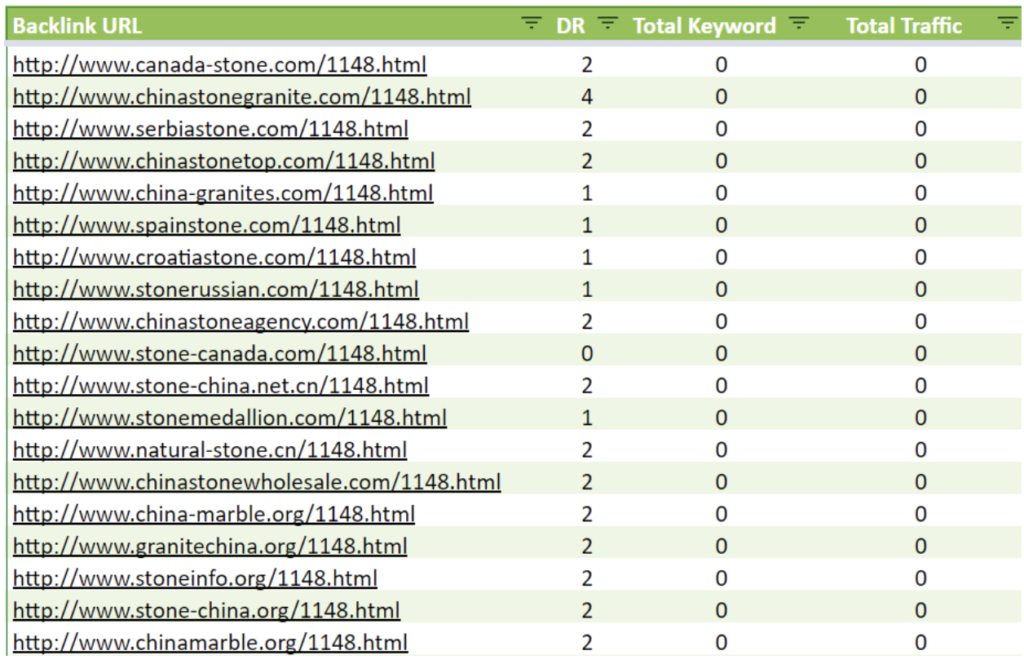
And once these spammy backlinks were identified, we disavowed them in Google Search Console to alleviate any negative impact they may have on rankings.
9. SEO Diagnostics
The final step of the initial SEO Foundations was to complete a full SEO Diagnostics of the NorthSpore.com website. The SEO Diagnostics process involved a complete crawl of the website and consisted of the following 3 components.
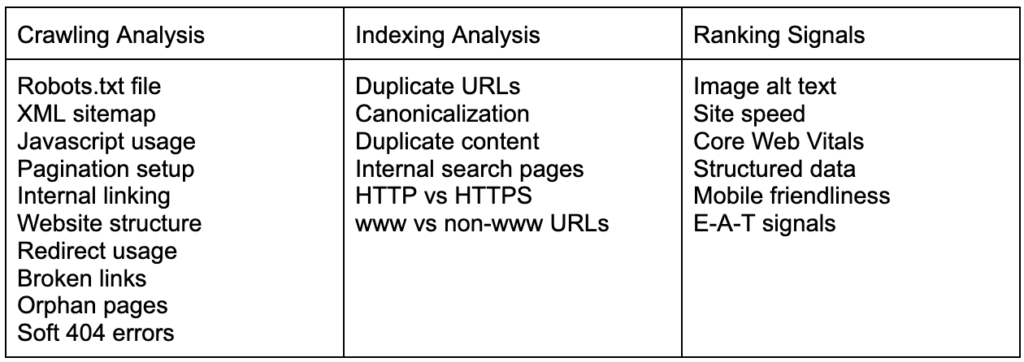
Through the SEO Diagnostics we were able to uncover some valuable SEO opportunities.
- The website had many “302” redirects that weren’t SEO friendly.
- There were a few broken links that could negatively impact crawling.
- Product images weren’t leveraging image alt text.
- The site had slow load times and low scores on Google PageSpeed Insights.
- There were many dead 404 pages that still had backlinks.
- Structured data (aka rich snippets) on product pages weren’t configured properly.
We then implemented all the necessary fixes to the issues above to ensure we weren’t leaving any SEO opportunities on the table, and that the website would be completely SEO-friendly.
Link Building
With the SEO Foundations completed, we shifted our resources towards link building. Reason being, the number of authoritative backlinks a website has from other websites is one of the most powerful ranking factors in Google. So we wanted to make sure we had enough backlinks to our category and product pages to outrank the competition.
There were a few link building strategies we used to acquire backlinks.
- Competitor Link Building
- Guest Posting
- Discount Code Outreach
- Scholarship Campaign
Competitor Link Building
Using Ahrefs Site Explorer, we were able to easily see all the websites linking to our competitors. So we reviewed our competitors’ backlinks to identify websites that might be interested in linking to us as well. Example:
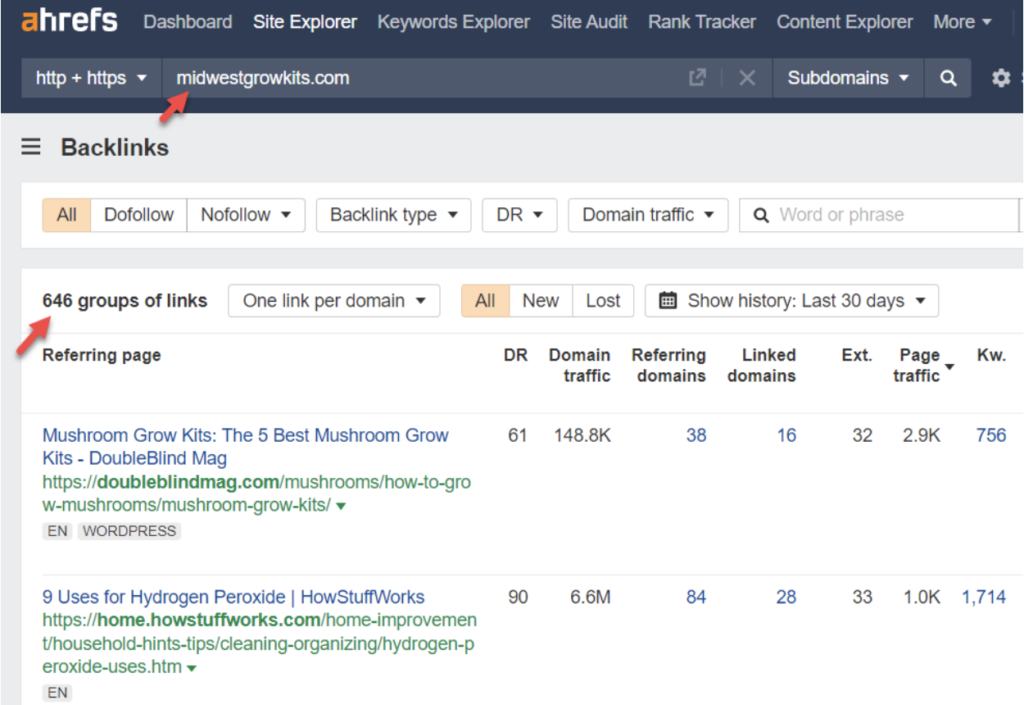
Product Reviews
North Spore had a product that their customers loved, and we knew that bloggers would love it too. So we identified 100’s of relevant blogs and offered to send them a free mushroom growing kit in exchange for an honest review of the product.
The product review outreach efforts were very effective and earned us multiple backlinks like this:
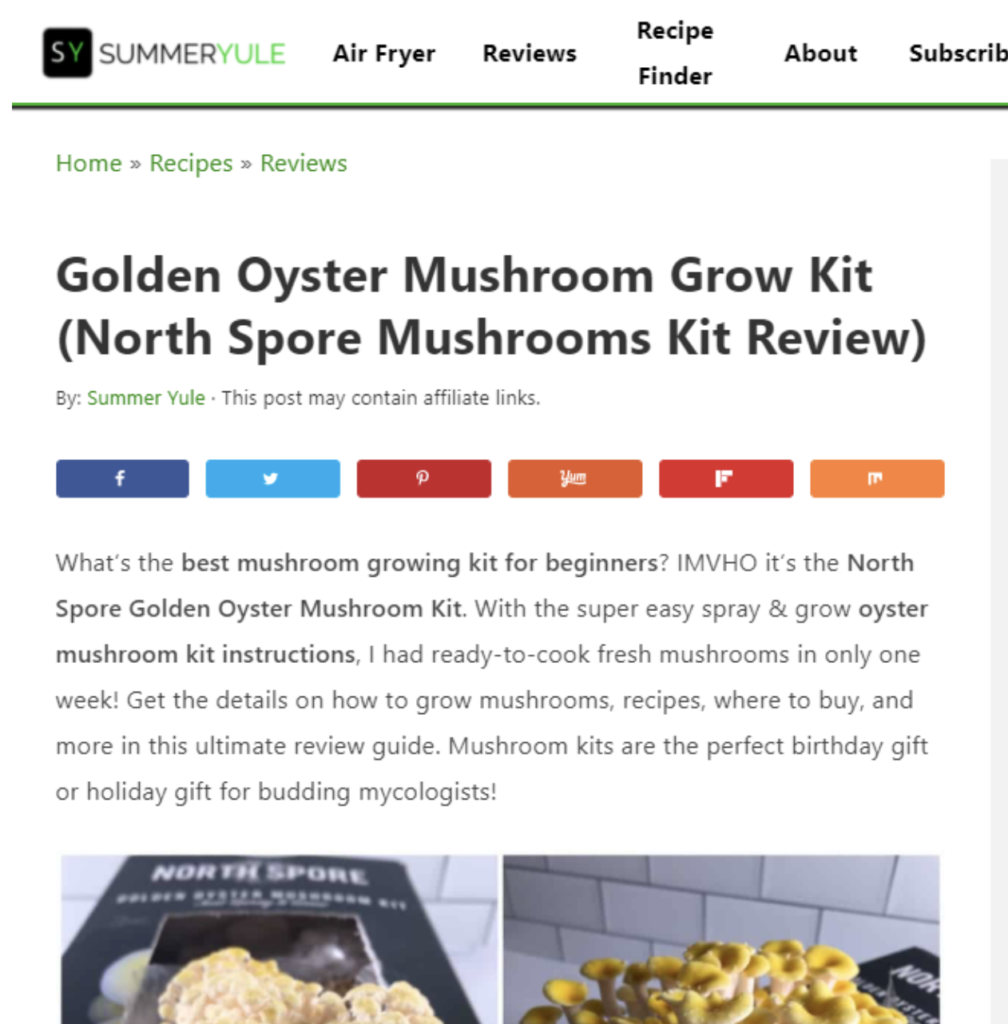
Guest Posting
Guest posting is one of the most common link building strategies because it’s very consistent. Basically you write a unique article for a related blog that contains a link to your website.
The popularity of this strategy has led to guest posting being abused and the effectiveness of guest posts being brought into question. However we’ve seen firsthand how powerful guest posts when the following guidelines are followed:
- The website must be relevant and ontopic
- The website must have editorial standards.
- The website also writes their own content and isn’t just a guest post farm (sites with a “write for us” or “contribute to” page are usually guest post farms).
- The website has a decent Domain Rating (25+) and is ranking for 1,000’s of keywords
- The guest post content is 100% unique.
- The guest post was written by someone with firsthand experience and knowledge of the topic.
And that’s exactly what we did for North Spore. We worked with a few relevant bloggers in the gardening / growing industry and were able to secure guest posts just like this.
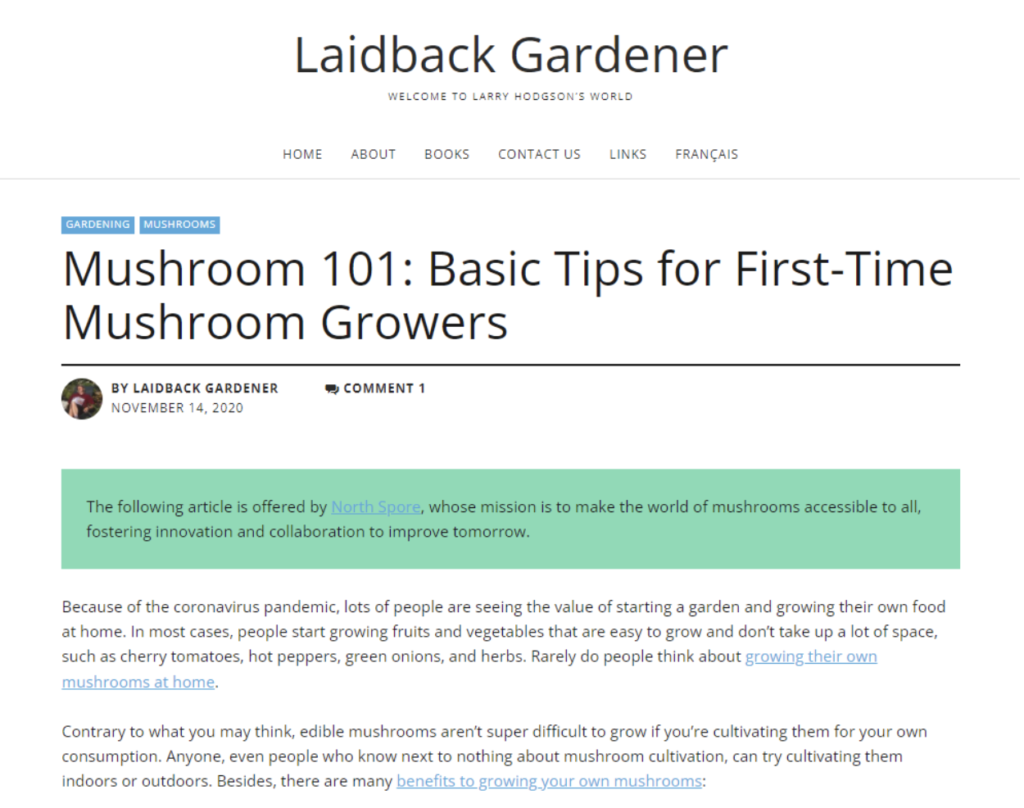
And since we were the ones writing the article, we had more control over the page the link points to. So it was much easier to get backlinks directly to the pages that need them the most (category pages and product pages).
Scholarship Campaign
We were having a lot of success obtaining backlinks from relevant websites, however these sites only had moderate Domain Ratings in the 25 – 50 range. We wanted to also acquire some high-authority backlinks, and this is where the scholarship link building campaign came in.
We worked with the client to offer a scholarship to university students. We created a scholarship page with all the details and began promoting it to university financial aid departments.
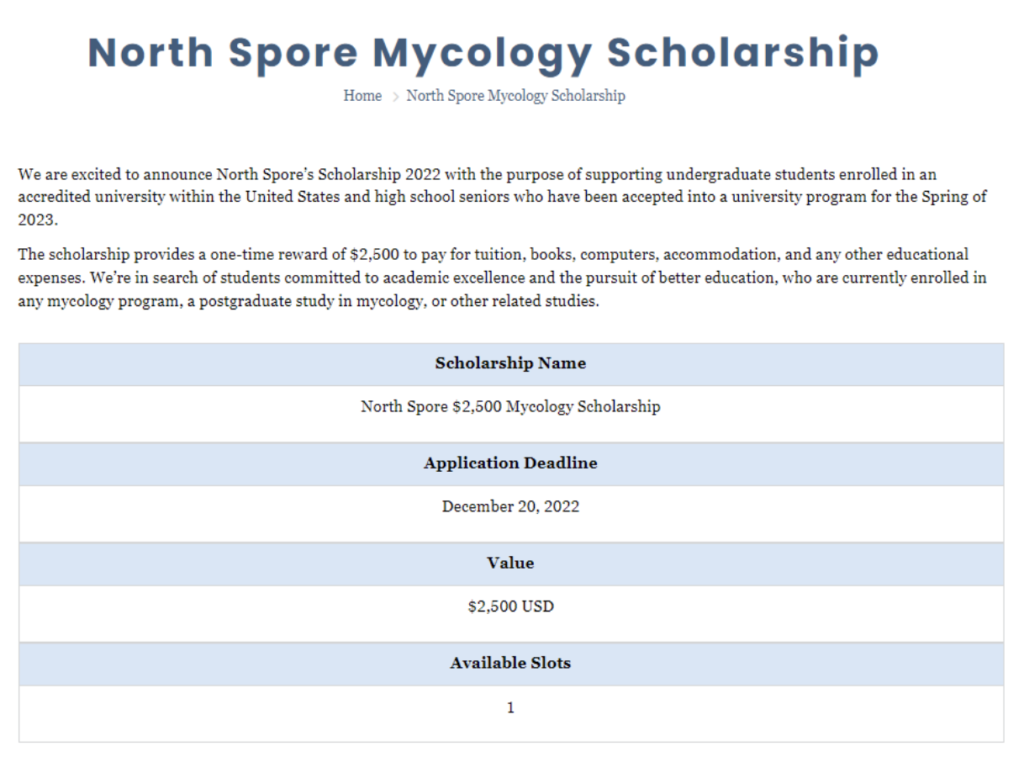
This resulted in a lot of backlinks from some very high-authority universities and other financial aid websites.
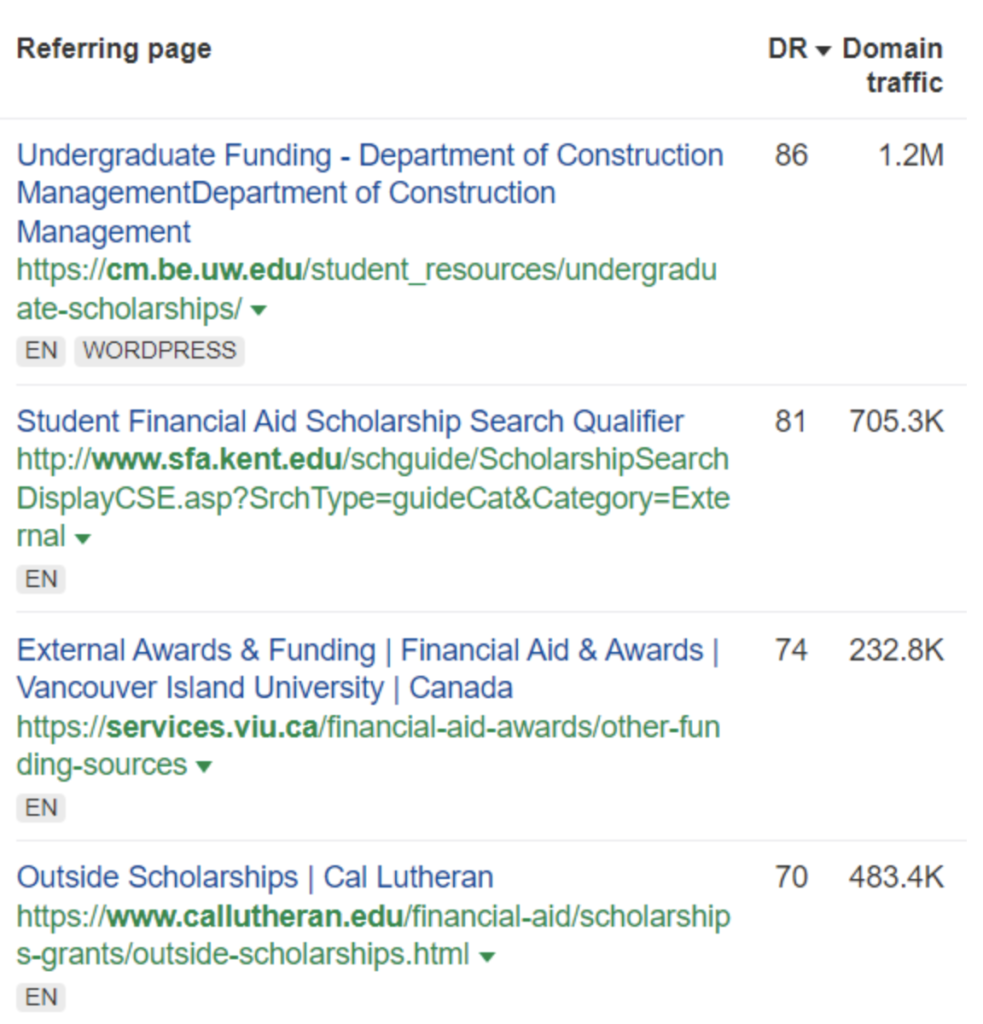
Link Building Results
The link building efforts worked exceptionally well and the number of North Spore’s backlinks doubled.
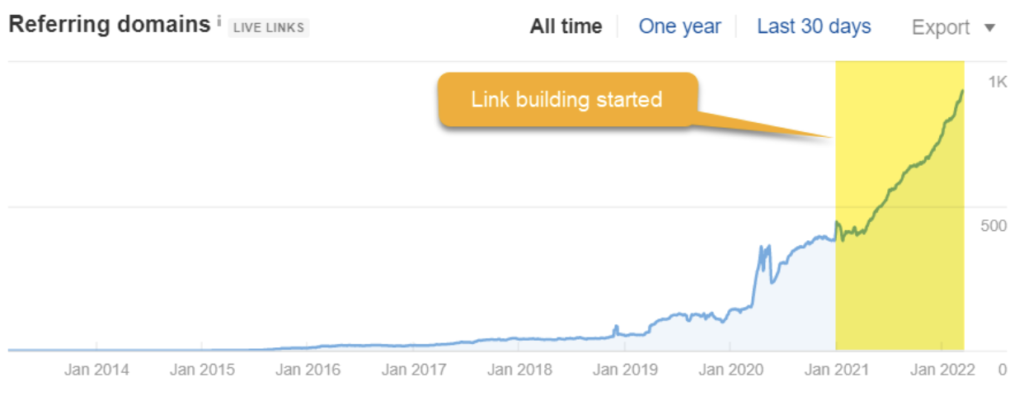
And as these backlinks came in, their Domain Rating also significantly increased from a DR of 31 to a DR of 46.
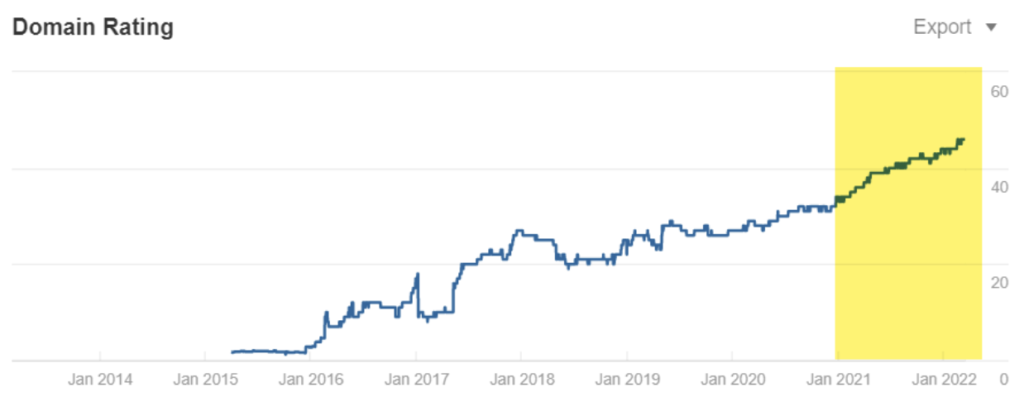
With a much higher Domain Rating, they could now rank for even more competitive keywords.
SEO Campaign Results
There was a lot of work that went into this SEO campaign. But what about the results?
Within 16 months, North Spore’s organic search traffic tripled.
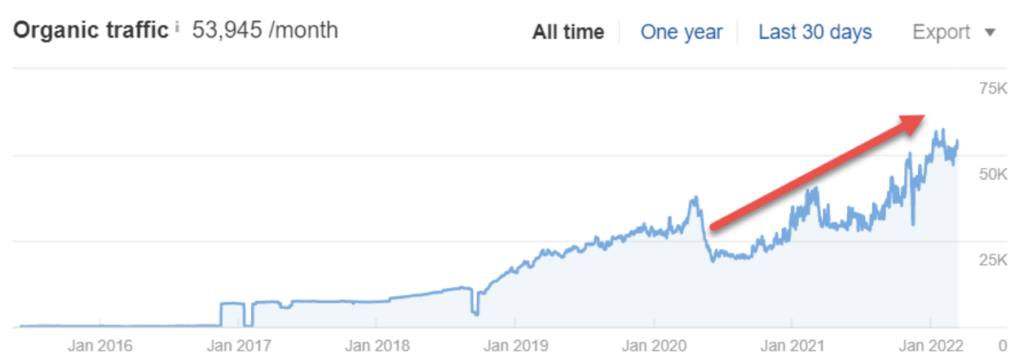
During the same time, the number of keywords on page 1 grew from just 910 to now having 3,452 keywords ranking on page 1.
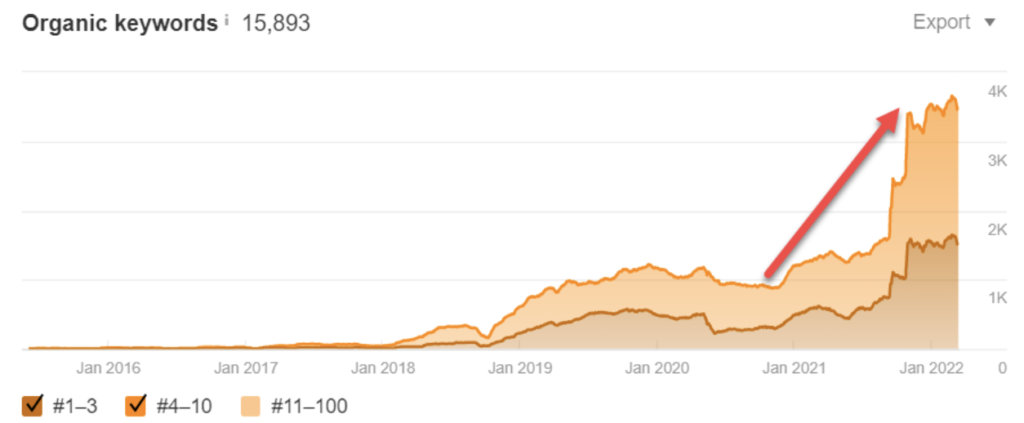
And here’s how their most important keywords were impacted by the SEO efforts.
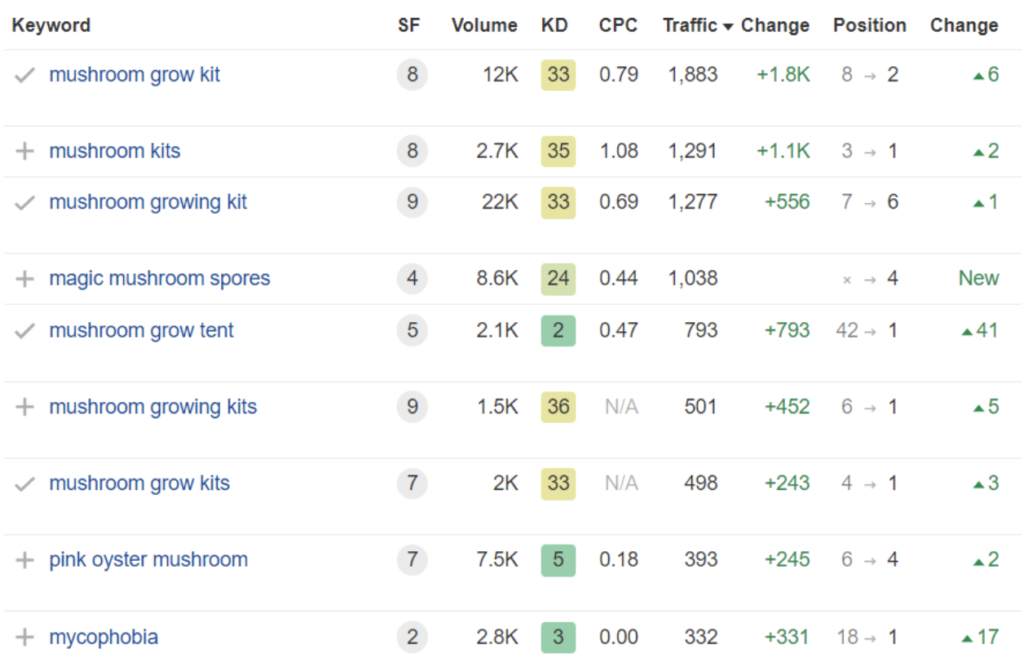
The campaign was a huge success and the North Spore team was very happy with the results.
It’s true that SEO does take time. But the results can be extraordinary for those that are patient and will to put in the work.
